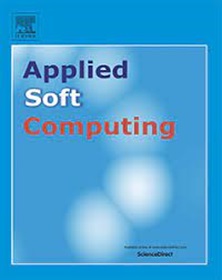Efficient prediction uncertainty quantification in dam behavior monitoring with attention-based sequence-to-sequence learning
IF 7.2
1区 计算机科学
Q1 COMPUTER SCIENCE, ARTIFICIAL INTELLIGENCE
引用次数: 0
Abstract
Displacement is an intuitive monitoring indicator of dam structural behavior. Conventional deterministic modeling methods frequently disregard the inherent uncertainty associated with monitoring data. This study aims to quantify such uncertainties within dam displacement predictions by augmenting a sequence-to-sequence structure with the novel recurrent unit, termed as tiny gated unit (TGU), attention mechanism, as well as quantile regression, resulting in the Att-S2STQ model. Specifically, TGU adopts only one gate to identify nonlinearity in data sequences, while Bahdanau attention mechanism dynamically assigns weights to different parts of the input sequence. The inclusion of quantile regression allows Att-S2STQ to produce prediction intervals (PIs), from which the probability density functions (PDFs) and cumulative distribution functions (CDFs) are further derived via kernel density estimation. PIs, PDFs, and CDFs jointly serve to reveal the prediction uncertainty. The effectiveness of the model is illustrated through comparative experiments using real-world dam monitoring datasets. Results indicate that the proposed model outperforms traditional methods in point, interval, and probability predictions, while also having a simpler structure and faster training. The superiority of both accuracy and efficiency makes it a valuable tool for dam management, aiding in data-driven decision-making and enhancing operational safety.
利用基于注意力的序列到序列学习在大坝行为监测中高效量化预测不确定性
位移是大坝结构行为的直观监测指标。传统的确定性建模方法经常忽略与监测数据相关的内在不确定性。本研究旨在通过新颖的递归单元(称为微小门控单元(TGU))、注意机制以及量子回归来增强序列到序列结构,从而量化大坝位移预测中的不确定性,最终形成 Att-S2STQ 模型。具体来说,TGU 只采用一个门来识别数据序列中的非线性,而 Bahdanau 注意机制则动态地为输入序列的不同部分分配权重。加入量子回归后,Att-S2STQ 可以生成预测区间(PI),并通过核密度估计进一步推导出概率密度函数(PDF)和累积分布函数(CDF)。PI、PDF 和 CDF 共同揭示了预测的不确定性。通过使用真实世界的大坝监测数据集进行对比实验,说明了该模型的有效性。结果表明,所提出的模型在点预测、区间预测和概率预测方面都优于传统方法,而且结构更简单,训练更快速。准确性和效率的双重优势使其成为大坝管理的重要工具,有助于数据驱动决策和提高运行安全。
本文章由计算机程序翻译,如有差异,请以英文原文为准。
求助全文
约1分钟内获得全文
求助全文
来源期刊

Applied Soft Computing
工程技术-计算机:跨学科应用
CiteScore
15.80
自引率
6.90%
发文量
874
审稿时长
10.9 months
期刊介绍:
Applied Soft Computing is an international journal promoting an integrated view of soft computing to solve real life problems.The focus is to publish the highest quality research in application and convergence of the areas of Fuzzy Logic, Neural Networks, Evolutionary Computing, Rough Sets and other similar techniques to address real world complexities.
Applied Soft Computing is a rolling publication: articles are published as soon as the editor-in-chief has accepted them. Therefore, the web site will continuously be updated with new articles and the publication time will be short.
 求助内容:
求助内容: 应助结果提醒方式:
应助结果提醒方式:


